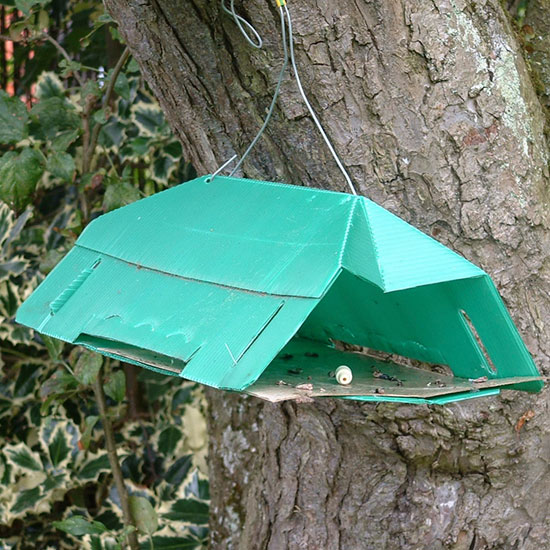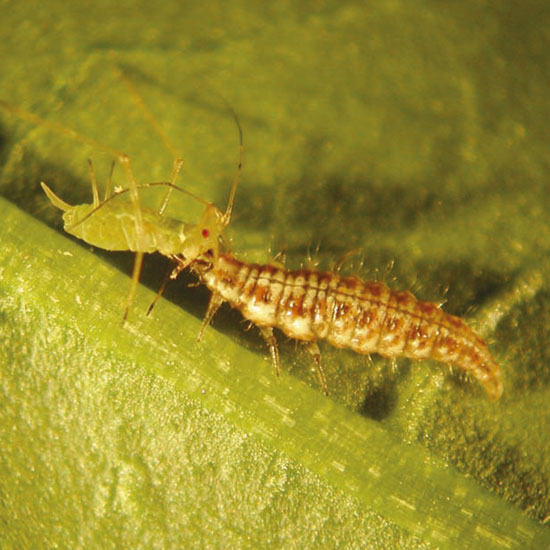It is interesting to note that the last few years have seen more and more gardeners growing their plants organically and this is being reflected commercially with a considerable number of growers doing likewise. But why is this happening? Is it just a modern fad or are the public generally becoming more concerned about the number of chemicals that are being used in the food they are going to eat? I contend that the latter is the case and I also believe that there will be a continuing and increasing interest in growing this way. Unfortunately the very term ‘organic growing’ is enough to prompt a vigorous debate in the horticultural world and the purpose of this blog is not to enliven this debate but to offer some practical advice on organically managing pests in fruit in the allotment and garden.
I cannot pretend that organic management of fruit pests is easy or will produce instant results but I can assure you that you can harvest your crops at any time and feel safe to eat them without ingesting any chemical residue at the same time. Incidentally providing that you grow fruit which is known not to be disease prone there is absolutely no reason why your fruit will grow poorly or be inedible. I grow all of my fruit organically yet can stage a collection in the Royal Horticultural Society’s Westminster Halls and receive a Gold Medal! In any case I have a young son who enjoys being in the garden and I want to be absolutely certain that everything in the garden is free from chemicals.
Organic growing overall can be considered in four stages – good preparation of the ground into which the fruit is to be planted, a careful selection of the varieties to grow, keeping the fruit healthy and an early identification of and then management of any pests. The first three of these I covered in a previous blog ‘Health and Hygiene in the Fruit Garden’ and so I will not cover them again. The purpose of this blog is to cover the fourth – the organic management of pests.
The first thing to recognise is that one of the most important assets that gardeners have to help them look after their fruit plants and trees is nature itself but this will only be possible if it is left undamaged and allowed to reach a balance. There are many beneficial insects, such as ground beetles, lacewings, hoverflies and ladybirds that can keep pests under control but this will not be possible if they have been destroyed by winter washes and chemical sprays. Grow plants such as buddleia and calendula which will attract hoverflies and lacewings into the garden and provide winter accommodation for hibernating lacewings in the form of straw filled boxes with openings in the front. Try and encourage birds, blue tits in particular, to eat overwintering pests by hanging bird feeders amongst the fruit trees. Amazingly earwigs, which are despised by most gardeners – probably for their fearsome look – can be very useful in that they will eat aphids, codling moth eggs and the red spider mite. The best way of keeping earwigs in your fruit collection – and this has recently been proven by East Malling Research – is to keep rolls of corrugated cardboard loosely attached to your trees where these insects can hide during daylight hours.
When it comes to the successful management of pests and diseases in the organic garden vigilance is an important aspect of good control as early notice of visible pests and diseases can often stop them spreading. Aphids – whatever colour they may be (and including woolly aphids), can be wiped off by hand or washed off by a jet of water, caterpillars eating away at leaves, most commonly gooseberries and redcurrants, can be picked off by hand and the same applies to slugs and snails attacking strawberries. Pear midge causes the small black pear fruitlets which eventually fall off the tree – these should be removed as soon as they are noticed along with any that are on the ground and should be destroyed. The round, fat buds found on blackcurrants is caused by the blackcurrant big bud mite and should be picked off and destroyed.
So let’s consider the likely fruit garden pests and the organic products which can be used to control them. All of these products are available from Pomona Fruits. Codling moth which burrows out of apples (although most gardeners think that they burrow in!) can be controlled with the use of pheromone traps as can the plum tree fruit moth. Winter moths climb apple trees in late autumn in order to lay their eggs; these can be simply controlled by the use of insect barrier glue as a layer around the tree trunk and the moths stick to this. The rather nasty raspberry beetles can be controlled by raspberry beetle traps and if you are growing your strawberries in the ground you can quite severely limit slug and snail damage by the use of strawberry slug mats or the copper coated fabric ‘Slug Barier For Strawberries‘. The latter two products, incidentally, are ideal for helping weed control! Unfortunately, as yet, there is no reliable control for the quite damaging pear midge so vigilance is still the key here.

Pheromone traps set up in your fruit trees at the end of May through to August will help control maggot damage.
The control of birds and squirrels is very difficult and I have learned this from hard experience! My advice here is that you are either going to have to keep your crops well netted or in a fruit cage – and I am particularly referring to sweet cherries, redcurrants or strawberries – or use sheets of fleece protection or ‘Envirotect‘ (a robust alternative to fleece). You can also use bird and squirrel scarers, strips of tin foil or old CD’s hanging in the trees but in my experience these methods rarely work well if at all!
You may be concerned by larger animals which can potentially dig up your plants. Although I am a great lover of cats, dogs and foxes I am aware that they can dig up strawberry plants or simply rampage through everything! Using ultrasonic ‘CATWatch‘ and ‘FOXWatch‘ deterrents will help you control them. There is no way that animals can be damaged by these deterrents as they simply emit a high pitched noise that these animals detest. The control of rabbits and deer is more difficult. I find that the only real control for rabbits is to grow fruit in a cage with the netting buried at least 30cm (1in) into the ground. Deer and rabbit damage to fruit trees can be minimised by the use of spiral tree guards over the tree stems. If you have problems with moles and/or field mice a very effective protection is by the use of ‘Sork Anti-Mole Bulbs’. These bulbs, which can be effective for 2 to 5 years, will when planted secrete a smell which deters these creatures but will not harm them.
An armoury of natural predators have been identified which can help with the control of many fruit pests and many of these are now used commercially. The two spotted spider mite which can be a troublesome pest of strawberries, raspberries and peaches can be controlled by the predator phytoseiulus persimilis. As noted earlier ladybirds are a very useful predator and both they and their larvae are voracious eaters of aphids. To augment your natural population of ladybirds you can buy packs of ladybird larvae which you can distribute in areas of heavy aphid populations. Lacewing larvae also like munching their way through aphid populations and they will also have a good go at red spider mite, thrips, mealy bugs and small caterpillars. As with ladybirds you can also buy packs of lacewing larvae to use in badly affected areas. If you grow your strawberries in the ground slugs may well be a problem and you may not be able or willing to use protection mats. If this is the case you can use parasitic nematodes (Phasmarhabditis sp.) which have become a very popular and good method of control. Vine weevil can be a real pest with plants grown in containers and can specifically harm soft rooted plants such as strawberries; these can also be controlled by another type of parasitic nematodes (Heterorhabditis sp.).

Lacewing larvae will feed on aphids and other small insects such as red spider mite, mealy bugs, thrips and young caterpillars.
So how about managing pests in your fruit garden organically? Nothing that I have described above is rocket science and anyone can therefore manage it. However, patience is a prerequisite as you will not change everything overnight. Do not be disheartened if your fruit suffers a little in your first organic growing season as it will take a year or two for the natural balance to occur; you will have to expect the odd blemish on your fruit but this will not be harmful. Just remember that your fruit will contain no applied chemicals and the environment of your garden contains a healthy insect population and surely that will make the sacrifice well worthwhile.
Gerry Edwards
12th May 2014
Gerry is an experienced amateur fruit grower who is Chairman of the RHS Fruit Group, a member of the Royal Horticultural Society’s Fruit, Vegetable and Herb Committee and also their Fruit Trials Panel. Gerry judges fruit nationally for the Royal Horticultural Society and is also a qualified National Vegetable Society judge.
